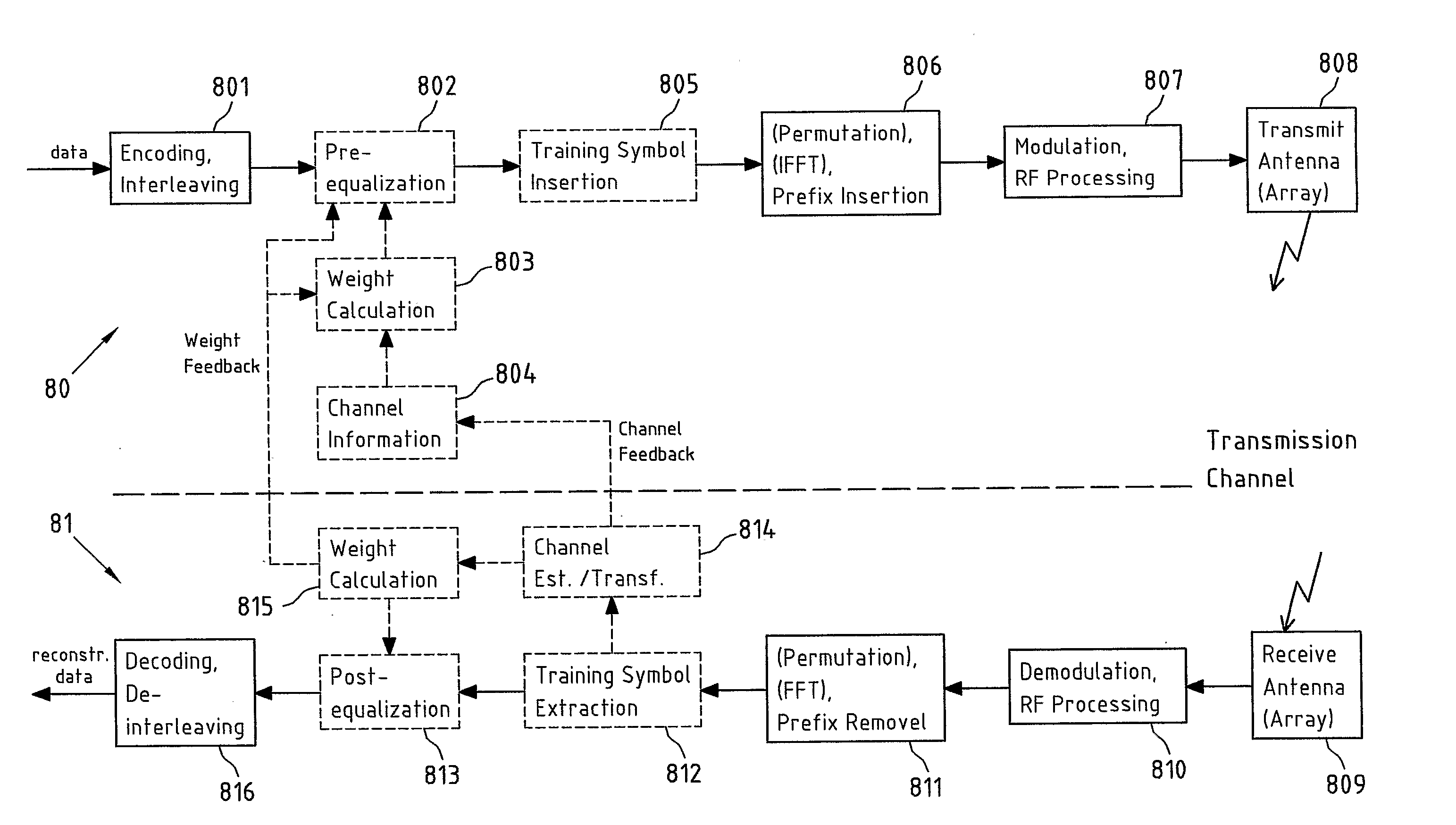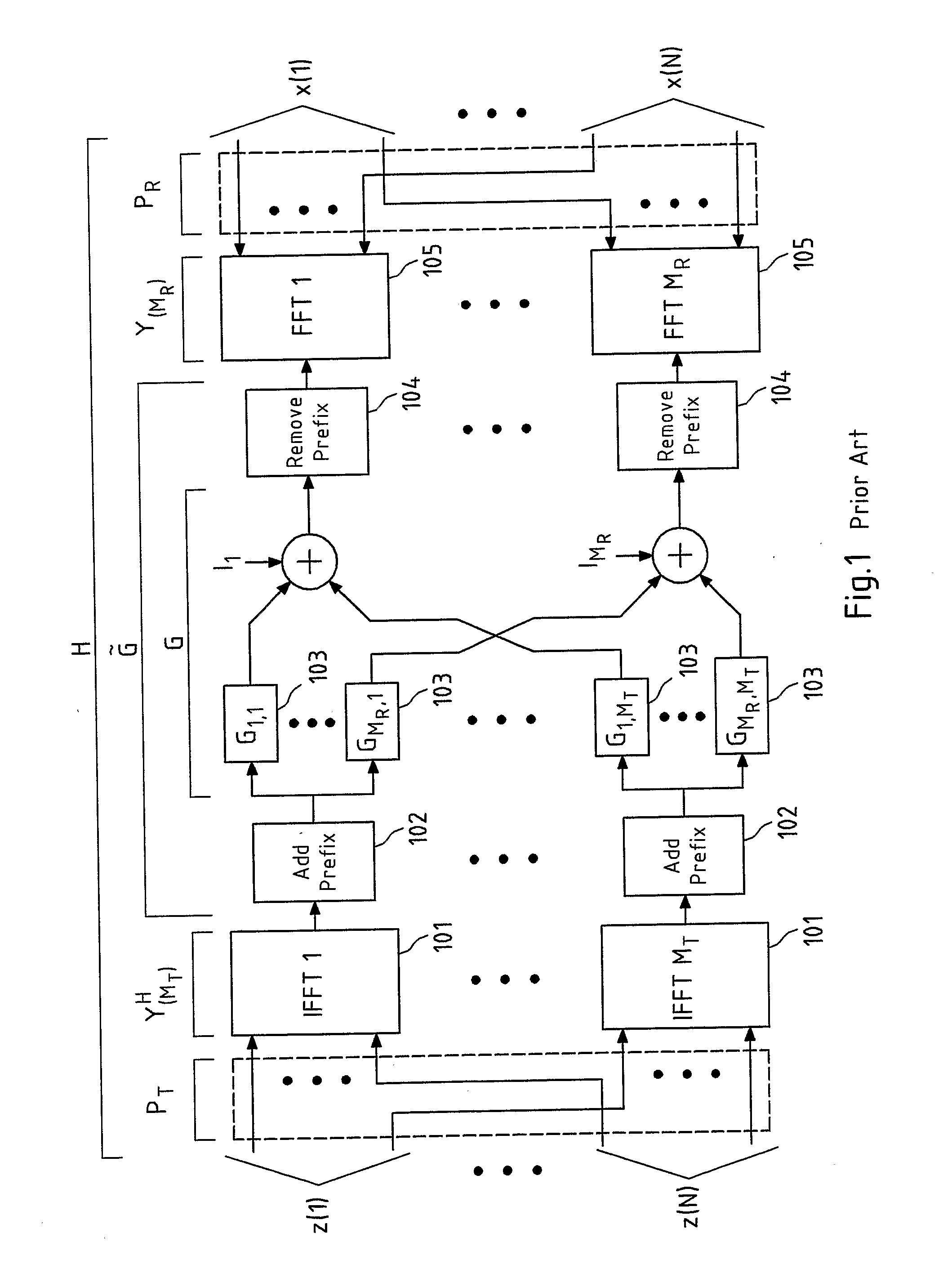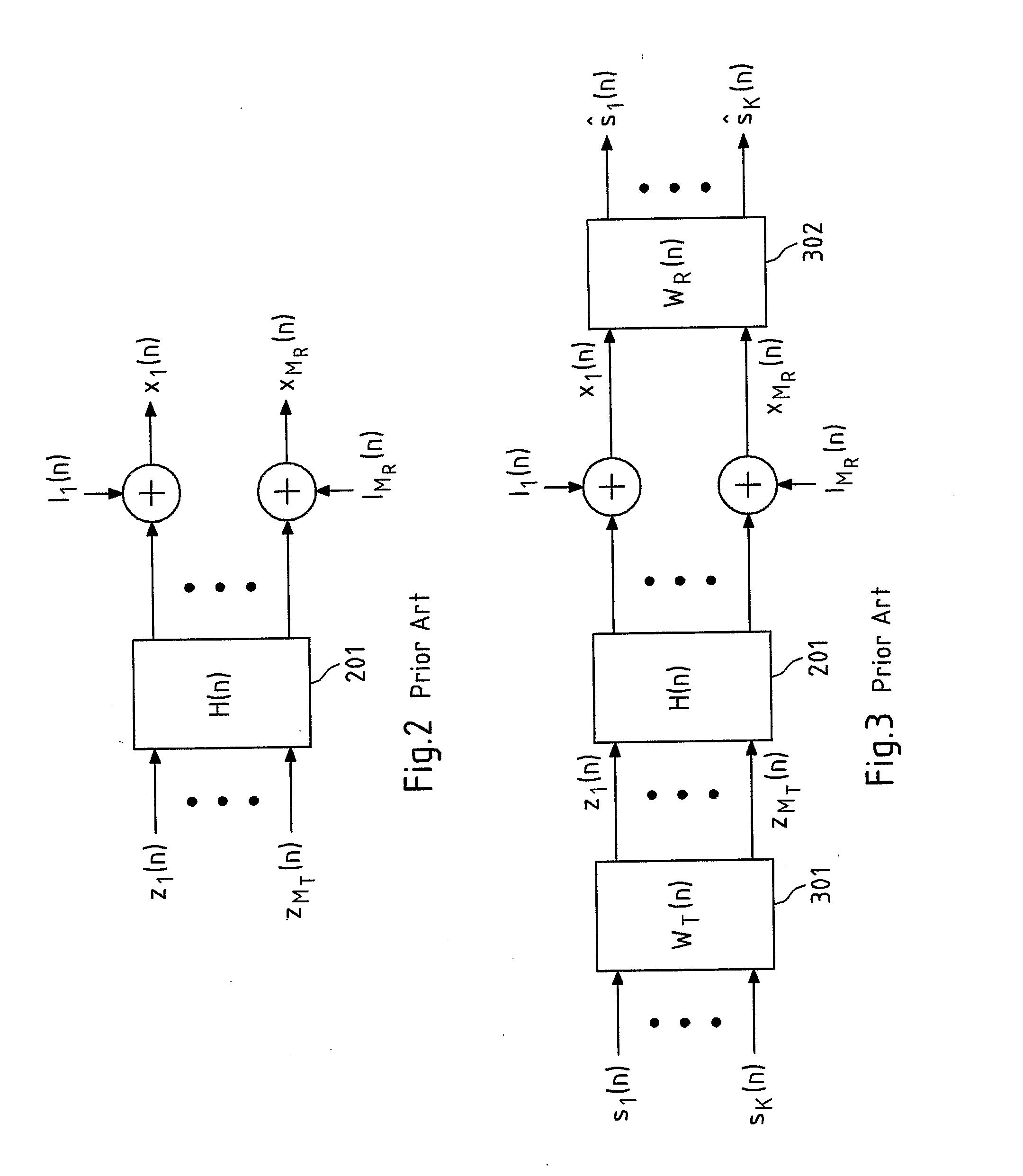Reduced Complexity Frequency Domain Equalization of Multiple Input Multiple Output Channels
a frequency domain and equalization technology, applied in the field of equalization of can solve the problem that the proposal is not suited to a frequency-selective transmission channel, and achieve the effect of reducing computational complexity and improving equalization performan
- Summary
- Abstract
- Description
- Claims
- Application Information
AI Technical Summary
Benefits of technology
Problems solved by technology
Method used
Image
Examples
first embodiment
[0113]FIG. 5 schematically depicts the present invention. In particular, FIG. 5 depicts the pre- and / or post-equalization of N decoupled sub-carrier channels H(n) 201 with corresponding pre-equalization filters WT(n) 301 and post-equalization filters WR(n) 302. It is readily understood that the cases in which only pre-equalization or only post-equalization is performed are included in this schematic representation as well, for instance, by appropriately setting the post- or pre-equalization filters equal to an identity matrix, respectively. The pre- and / or post-equalization allows for a reconstruction of the symbols sk(n) transmitted over each sub-carrier channel H(n), yielding reconstructed symbols ŝk(n).
[0114] In FIG. 5, the formation of a set 501 of sub-carrier channels H(n) 201 comprising {tilde over (B)} sub-carrier channels is depicted in dashed lines. The size {tilde over (B)} of said set 501 may for instance be deduced from an estimation or measurement of the channel coheren...
second embodiment
[0117] In the present invention according to FIG. 6, a set 501 of sub-carrier channels 201 is formed as in FIG. 5, and for said set of sub-carrier channels, a first-type equalization filter is determined based on either a single (e.g., a first or center) or an averaged sub-carrier channel (e.g. averaged over all sub-carrier channels of a set 501 of sub-carrier channels). As in the embodiment of FIG. 5, K−1 sets 501 of {tilde over (B)} sub-carrier channels each with one respective determined first-type equalization filter WT,b and / or WR,b with b=1, . . . ,N / {tilde over (B)} are formed. However, the second-type equalization filters in each of said sets 501 are not derived as identical equalization filters from said respective first-type equalization filters, but are obtained via interpolation and / or extrapolation, as is indicated by the notation WT,b=f(n;B~;N;WT,1,… ,WT,NB_)
(for WT,b=f(n;{tilde over (B)};N;WT,1, . . . ,WT,N / B)
(for WR,b correspondingly), i.e. each equalization fi...
PUM
 Login to View More
Login to View More Abstract
Description
Claims
Application Information
 Login to View More
Login to View More - R&D
- Intellectual Property
- Life Sciences
- Materials
- Tech Scout
- Unparalleled Data Quality
- Higher Quality Content
- 60% Fewer Hallucinations
Browse by: Latest US Patents, China's latest patents, Technical Efficacy Thesaurus, Application Domain, Technology Topic, Popular Technical Reports.
© 2025 PatSnap. All rights reserved.Legal|Privacy policy|Modern Slavery Act Transparency Statement|Sitemap|About US| Contact US: help@patsnap.com



